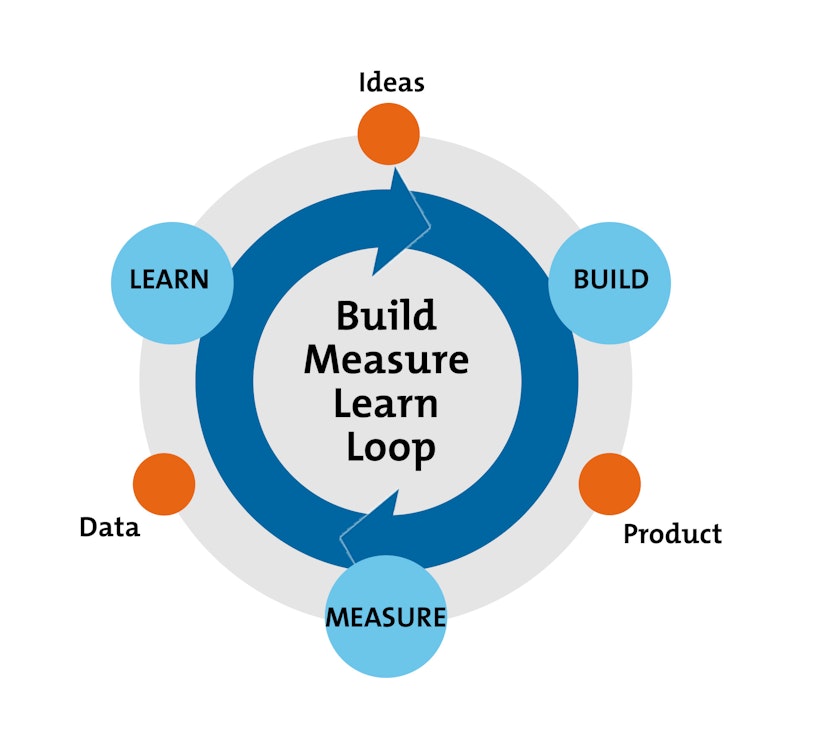What is UX Strategy
Very simply put, a UX strategy is the rationale behind a product and is a central part of the UX process. It encompasses the plans, principles, and approaches that shape the way a team creates a product.
In case you'd like to get a better grasp of the intricacies of the UX Process, you're also welcome to take a look at the video we've prepared on the subject:
In this article, we’ll take a closer look at why UX strategies are necessary, and what they consist of.
Why create a UX strategy?
As design practices advance, we see more and more thought and analysis being put into products. We’ve shifted from creating just good-looking interfaces to designs that solve problems for as many people as possible.
This shift has happened, in part, due to the advent of user experience design and the thought process behind it. The modern business ecosystem has become more user-centric and focused on providing users with real value.
UX strategies matter because they help companies create coherent experiences at every user touchpoint. As a result, this consistency allows us to increase customer satisfaction and ensure brand loyalty.
From a team perspective, strategies allow to create alignment among all members and act as a common denominator. This way, they can be sure to solve the right problems by using the right insight and arguments.
What goes into a UX strategy?
In an attempt to simplify the way we view UX strategies, we’ll outline three essential questions they should answer:
“Where are we now?” — assessing the current state of affairs;
“Where are we going?” — setting clear goals and objectives;
“How do we get there?” — identifying ways to merge the gap between the current state and product goals;
UX specialists use a wide array of approaches and research methods to find answers to each of these questions.
Let’s zoom in on each of them:
Where are we now?
Every journey has a beginning. By understanding where your starting point is, you can establish the necessary course of action to reach your goals. Furthermore, it’s a sure way to learn about your product’s most pressing issues.
To holistically assess where a product is at the moment, we need to tap into product metrics, user research, and competitive research.
Product metrics
These are a series of performance indicators and data points that gauge the success of a product. They allow us to understand how well a product serves its users and identify its potential issues. Naturally, different companies choose to focus on different metrics.
Here are a few common ones:
LTV (Customer Lifetime Value);
ARPU (Average Revenue Per User);
Customer Conversion Rate;
Dwell Time;
NPS (Net Promoter Score);
Obviously, this method works if you’ve launched something already, since only then you’ll be able to start tracking metrics. If your product is not launched yet think through the metrics you should be aiming for. More on that in the second section.
User research
Also known as UX research, this part of the UX process systematically studies a product’s users, along with their needs and motivations. These research methods are both qualitative and quantitative. They yield valuable data that is then applied in the design process as the context in which a product will exist.
This allows us to understand what is relevant for our users, and learn the ways we can address their needs and wishes.
Here are a few common types of user research:
Card sorting;
Interviews;
Usability testing;
Tree testing;
Accessibility evaluation;
Diary study;
Competitive research
This class of research helps teams get a better overview of the product landscape — the market, direct competitors, prices, etc.
It allows companies to understand who your product is competing against and the market’s visual design language. Similarly, it highlights the significant differences between your product and your competition's offering.
“Where are we going?"
This part of your UX strategy mostly looks into your product’s broader aims and the business objectives. Here we must set realistic, precise, and measurable targets.
These goals typically have to do with reducing costs, increasing revenue, growing user engagement, and so forth.
When determining a strategy for reaching the goals you’ve set, it’s important to involve as many stakeholders as possible, so that you could brainstorm the most ideas and solutions. That’s often easier said than done, since businesses are not always familiar with how to hold productive ideation meetings.
The best way to maximize the efficiency with which your team solves problems together is a team alignment workshop. Feel free to find more details on workshops here.
“How do we get there?”
Once you’ve established the direction your product is headed, it’s essential to assess the means by which this gap can be bridged. Similar to the steps above, this one, too, needs to be specific and detailed.
This part of your strategy will fuel your decisions regarding design, which is why it needs to be thoroughly thought out. This part can touch on both technical and managerial aspects.
Value innovation
This UX strategy tenet aims to align a product’s novelty with its cost and utility. The main idea behind it is to create an ingenious solution to a problem, which is also capable of making a positive return on investments. In layman’s terms, it’s providing as much value as possible as cheaply as possible.
The idea of value innovation goes hand in hand with the blue ocean concept, which was coined by W. Chan Kim and Renée Mauborgne. The gist of the blue ocean strategy is that you should seek to provide value that has no competition, rather than compete in a bloody-red ocean of competitors. Read more on that here.
Validated user research
The idea behind this tenet is the business's focus on solving the problems of a particular section of its user base. The goal is to study their behavior and validate it with measurable data.
According to Eric Ries’s “Build-Measure-Learn” feedback loop, we need to build products that are fueled by ideas, extract data from measuring how these products perform, and then gather insight from the data we’ve extracted. This is a continuous and iterative process.

Systematic and thorough user research is the link that connects ideas and successful products. Here, we apply user research to make sure that our product’s value proposition is on point.
Flawless user experience
Businesses don’t choose to incorporate user experience in their process for altruistic reasons. At the end of the day, any organization is interested in increasing profits — and that’s totally fine. The great part about it is that impeccable UX is a means to differentiate a product from its competitors and grow its market share.
Conclusion
Our business ecosystem keeps evolving, and its standards continue to grow. Today, a UX strategy isn’t just a way to have an edge over your competitors. On the contrary, it’s an indispensable part of your product’s success — and most probably you can’t do without one.
A strategy will guide your team through the hardest moments, and act as a framework for your choices and decisions.





